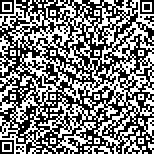| 本文已被:浏览 1649次 下载 633次 |

码上扫一扫! |
|
|
| 基于生物信息学方法的祛风解表中药干预过敏体质机制研究 |
|
张昆林1,2, 孙鹏程3, 陈雪梅4, 陈建新3, 张妍4, 王一3, 王济4, 王琦4
|
|
1.中国科学院心理健康重点实验室, 中国科学院心理研究所, 北京 100101;2.中国科学院大学心理学系, 北京 100049;3.北京中医药大学中医学院, 北京 100029;4.北京中医药大学国家中医体质与治未病研究院, 北京 100029
|
|
| 摘要: |
| [目的] 探讨祛风解表中药干预过敏体质的分子机制。[方法] 通过生物信息学方法中的网络药理学及多组学联合通路分析,将分别来自祛风解表中药靶点、GWAS catalog提取的过敏共病基因、基因芯片鉴定的过敏体质和平和体质差异基因(树突状细胞未成熟为imDEG,已成熟为mDEG)的不同基因集结果在通路水平进行相互印证,使用元分析加权合并P值并校正,综合检测过敏过程中靶蛋白可能参与的通路,构建蛋白-蛋白相互作用网络(PPI)筛选核心靶点。[结果] 从15味有抗过敏作用的祛风解表中药筛选出545个活性成分,预测并筛选出226个靶点基因,与427个过敏共病基因、1 240个imDEG、743个mDEG进行多组学联合通路分析,鉴定出24个多组学显著性通路,包括6个过敏相关通路,即白细胞介素(IL)-4和IL-13信号、T细胞受体信号通路、CD28家族的共刺激、脂多糖的细胞反应、转化生长因子-β(TGF-β)受体信号通路、抗原加工-交叉提呈。在过敏通路相关的28个靶蛋白中鉴定出11个核心靶点,即丝裂原活化蛋白激酶(MAPK8)、蛋白激酶B(AKT1)、MAPK1、SRC、MAPK14、HSP90AA1、LCK、PARP1、PDPK1、JAK3、基质金属蛋白酶(MMP3)。[结论] 上述通路及靶点主要反映了树突状细胞的提呈、T细胞受体信号转导、Th2型细胞因子分泌以及免疫耐受的过敏进程,揭示了祛风解表中药干预过敏体质的免疫学机制。研究为探索中药干预过敏体质的分子机制提供了一个方法学框架。 |
| 关键词: 过敏体质 祛风解表 多组学分析 网络药理学 |
| DOI:10.11656/j.issn.1672-1519.2021.03.01 |
| 分类号:R2-03 |
| 基金项目:国家自然科学基金项目(81973715);北京市自然科学基金项目(7202110)。 |
|
| Research on the mechanism of intervention of allergic constitution (TIZHI) by Chinese medicines for expelling wind to relieve superficies based on bioinformatics |
|
ZHANG Kunlin1,2, SUN Pengcheng3, CHEN Xuemei4, CHEN Jianxin3, ZHANG Yan4, WANG Yi3, WANG Ji4, WANG Qi4
|
|
1.CAS Key Laboratory of Mental Health, Institute of Psychology, Chinese Academy of Sciences, Beijing 100101, China;2.Department of Psychology, University of Chinese Academy of Sciences, Beijing 100049, China;3.College of Traditional Chinese Medicine, Beijing University of Chinese Medicine, Beijing 100029, China;4.National Institute of Traditional Chinese Medicine Constitution and Preventive Medicine, Beijing University of Chinese Medicine, Beijing 100029, China
|
| Abstract: |
| [Objective] To investigate the molecular mechanism of intervention of allergic constitution (TIZHI) by Chinese medicines for expelling wind to relieve superficies.[Methods] The data of 4 gene sets were composed of the predictive targets of Chinese medicines for expelling wind to relieve superficies, allergic comorbid genes extracted from GWAS catalog database, allergic genes identified by immature dendritic cells (imDEGs) and mature dendritic cells (mDEGs), respectively. They were mutually verified at the pathway level through network pharmacology and multi-omics combined pathway analysis in bioinformatics methods. Meta-analysis was used for P value weighted merging, and the corrected P value was used to screen the pathways that the target proteins may participate in during the allergy process. The hub genes were screened by constructing a protein-protein interaction (PPI) network.[Results] The 545 active ingredients were screened out from 15 Chinese medicines for expelling wind to relieve superficies with anti-allergic effect. The predicted and screened 226 target genes, 427 allergic comorbid genes, 1240 imDEGs, and 743 mDEGs were used in the joint analysis of multi-omics pathways. The 24 multi-omics significant pathways were identified, including 6 allergy-related pathways, namely Interleukin-4 and Interleukin-13 signaling, T cell receptor signaling pathway, Co-stimulation by the CD28 family, cellular response to lipopolysaccharide, TGF-β receptor signaling pathway, antigen processing-cross presentation. Among the 28 target proteins related to the allergy pathways, 11 core targets were identified, namely MAPK8, AKT1, MAPK1, SRC, MAPK14, HSP90AA1, LCK, PARP1, PDPK1, JAK3, and MMP3.[Conclusions] The above-mentioned pathways and targets are associated with the allergy process including the presentation of dendritic cells, T cell receptor signal transduction, Th2 type cytokine secretion, and immune tolerance, revealing the mechanism of the intervention of allergic constitution (TIZHI) by Chinese medicines. Our research provides a methodological framework for exploring the molecular mechanism of intervention of allergic constitution (TIZHI) by Chinese medicines. |
| Key words: allergic constitution (TIZHI) expelling wind to relieve superficies multi-omics analysis network pharmacology |
